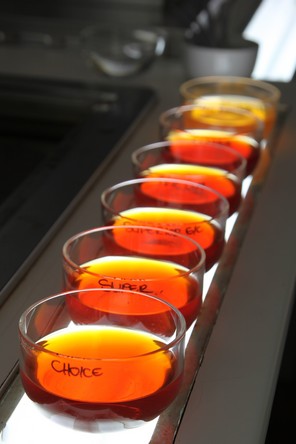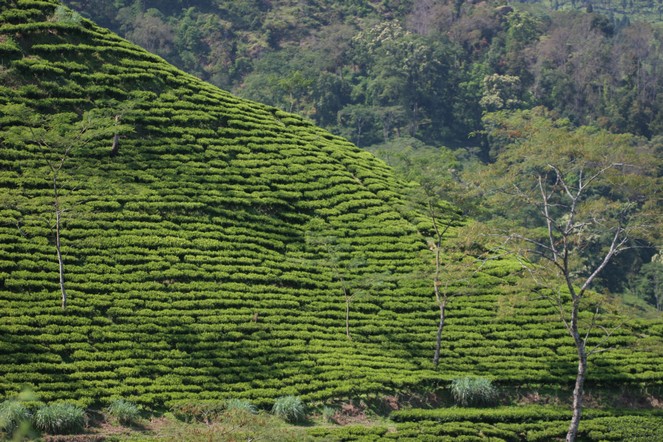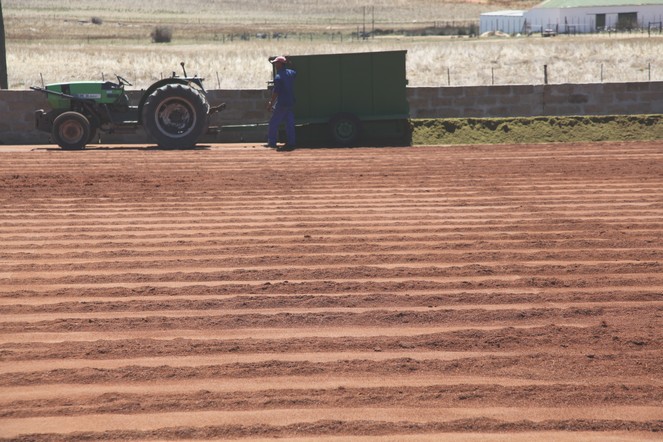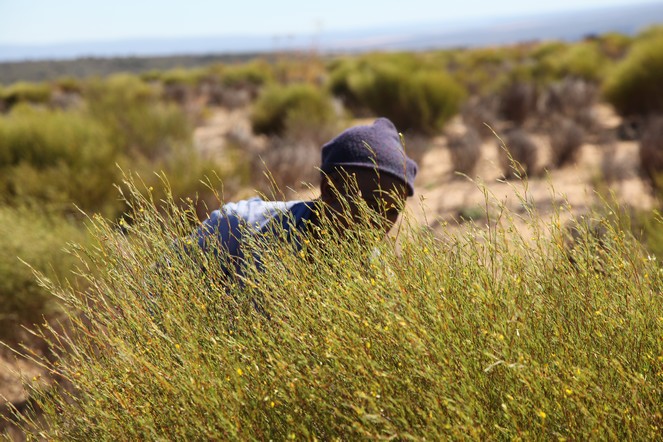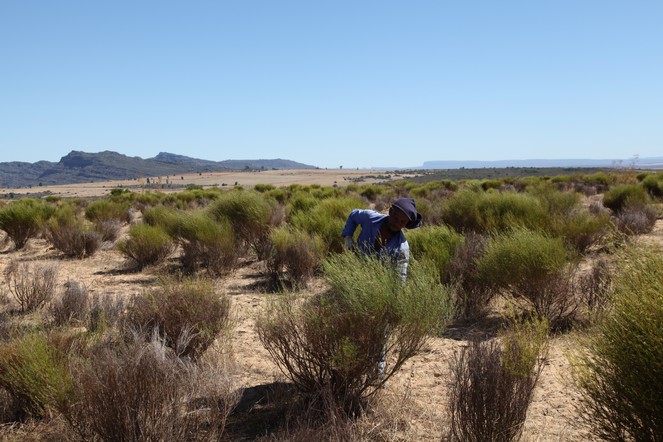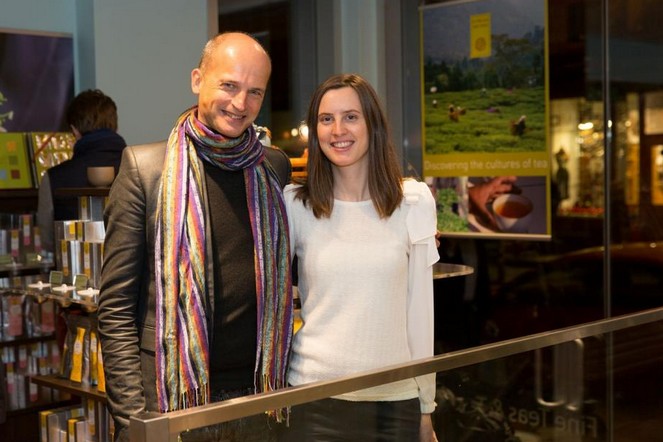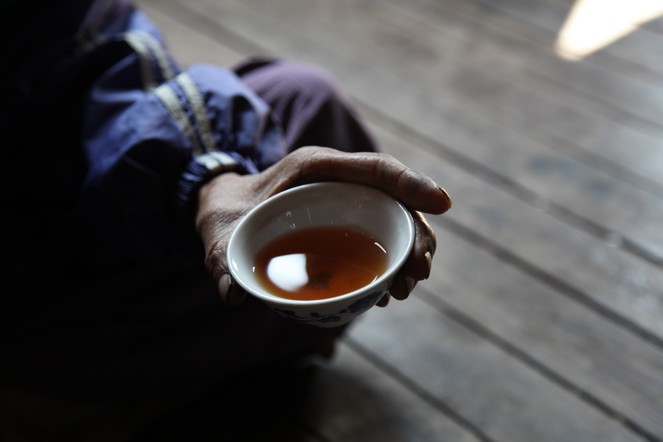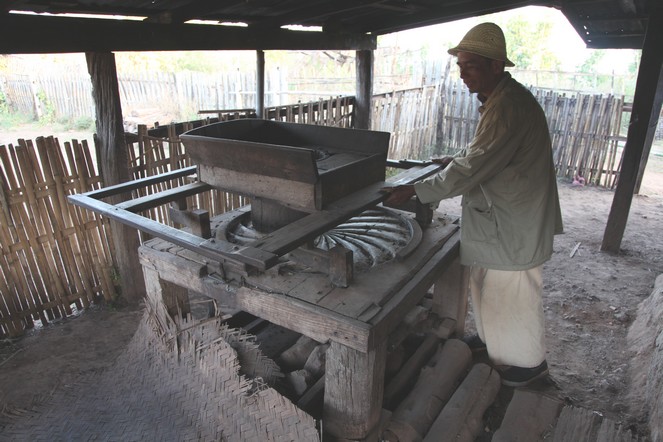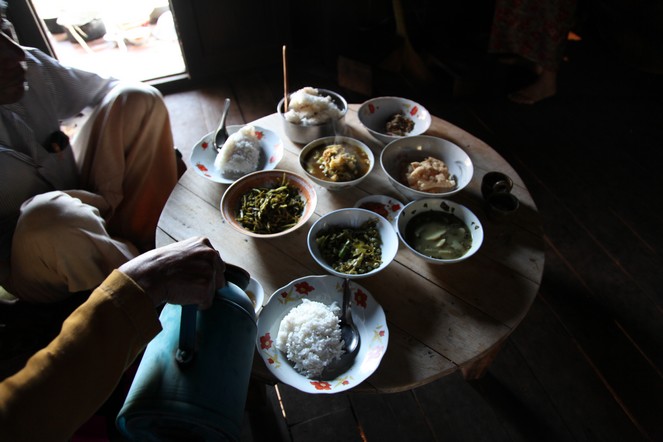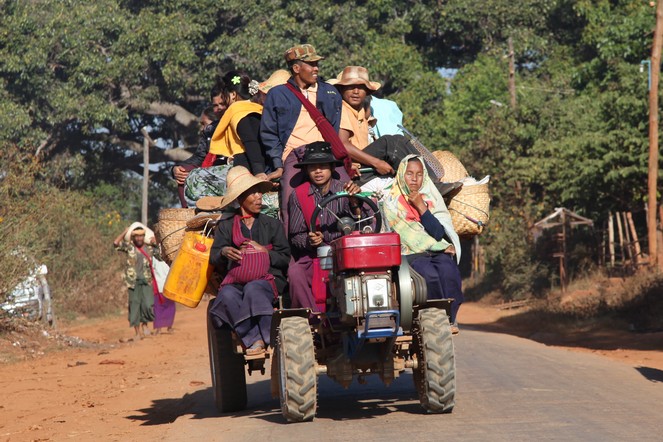There are different grades of rooibos, but not much difference between them. However, the “long cut” offers the most interesting experience in terms of fine flavours and powerful aromas. It is the most harmonious. It is the only grade I have bought for years.
An amusing detail: for rooibos tastings in South Africa, the cups are lit from beneath in order to judge the clarity of the liquor.
ARCHIVE FOR 2013
In Darjeeling, the spring harvest is approaching
In a few weeks’ time, the spring tea harvest (first flush) will begin in Darjeeling. The weather is a decisive factor in determining the timing of the harvest, and Darjeeling fans will be as happy as I am to learn that it has finally just rained there, after a long period of dryness.
Anil Jha, the planter at Sungma, has just informed me that on the night of 16 February, between 18 and 32 millimetres of rain fell in the region.
The oxidation of rooibos
As soon as they are plucked, the rooibos shoots are cut and sprinkled with water. Then the oxidation process can begin. This takes place outside and causes the leaves to change colour, from green to brown. When it has oxidised to the right degree, the rooibos is spread out on the ground in a fairly thin layer, so it can dry in the sun.
The rooibos harvest in South Africa
The rooibos harvest has begun, and I am happy to be here. The harvest lasts less than two months. South Africa is the only country that produces rooibos, a plant sometimes known as “red tea”, but which is not a tea at all.
Rooibos is rich in antioxidants and is completely free of caffeine. It is my favourite drink before going to bed.
In a desert of stone and sand
It is only 38 degrees centigrade at the moment in this desert of stone and sand, situated three hours’ drive north-west of Cape Town (South Africa). This temperature is relatively clement, as rooibos is often harvested at around 45 degrees. The heat does not bother Aspalathus lineari, also known as rooibos. With roots that bury themselves to depths of up to four metres, the bushes seek coolness deep in the ground. I wish I could do the same!
A new Palais des Thés store opens in New York
I was lucky enough to travel to New York last week for the opening of the new Palais des Thés store in Soho (156 Prince Street). Here I am with my niece Aurélie Bessière who has been working with her husband Cy for two years to promote the Palais des Thés brand among Americans.
I was delighted to be able to meet dozens of attentive journalists throughout the course of the day. I showed them the best way to make tea, told them all about my work as a tea researcher and “tea sommelier”, and answered lots of questions. In the evening, Aurélie and I welcomed many guests.
It was a wonderful occasion and a exciting challenge now lies ahead: to encourage people to appreciate fine teas on that side of the Atlantic.
Tea, this flavoured water that does us good
I like this hand that holds a cup of tea. A simple cup of tea. I like the way the cup is an extension of the hand. The cup and hand are as one, they know each other, they are made for each other. They are joined together.
Tea is nothing more than that. Tea is nothing more than flavoured water that sustains you and does you good. It is always there for you. A simple pleasure to be savoured in every moment.
Artisanal production
In Myanmar (Burma), the production of tea remains highly artisanal. People make both green and black tea. I haven’t found anything special in my tastings so far, but I’m continuing my research.
Here, in the Hsipaw region, the main tea producing area, villagers take the plucked tea leaves home and process them in front of their houses. This is what the local rolling machines look like. They are worked by hand.
A different way of enjoying tea
In some countries, people don’t just drink tea, they eat it.
Like here, in Burma, where they ferment tea leaves in bamboo tubes before serving them drizzled with sesame oil. This dish is served as part of a meal, but it can also be offered at the end of some family and religious ceremonies.
En route for Shan State and the mountains of the Golden Triangle
My quest to unearth the world’s finest teas often finds me travelling familiar roads, whether in China, India, Japan, Nepal or Korea. However, sometimes I need to take a different route.
Exploring new areas is part of my work as a tea researcher; here I am en route to the north of Shan State and the mountains of the Golden Triangle. I’ve heard it said that the main tea producing region of Myanmar is in Namshan.
I’m ready for my adventures of discovery!

